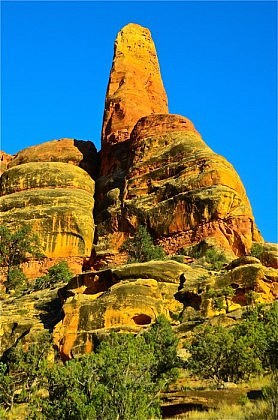After the Park Service closed the now infamous Yellowstone garbage dumps (where bears fed as a public spectacle) during the early ’70’s, the Yellowstone grizzly population plummeted. That’s because the agency failed to heed the warnings of bear researchers John and Frank Craighead to wean the bears off the garbage gradually. Instead, the “cold turkey” approach utilized by the Feds resulted in lots of bears raiding camps, injuring people and getting into trouble in a frenzied search for new food items. As a result, way too many of these “problem bears” were “removed” from the population, which is a euphemistic way of saying that they were intentionally killed by the Park Service.
By the mid-1970’s the grizzly was plummeting toward extinction in the Greater Yellowstone Ecosystem (GYE) and the total population was down to not much over 100 bears, with very few breeding females. One of the basic precepts of conservation biology is that small isolated populations are likely to “wink out”; that is they become extinct due to various potential pitfalls such as drought, disease, loss of food sources, hunting, too few breeding females, or genetic problems such as inbreeding (bigger populations, especially if connected by suitable habitat to other populations of their species, can better withstand such events). So by the mid-1970’s, the Yellowstone grizzly was in grave jeopardy. While backpacking in Yellowstone during this time period, it was a rare event indeed to encounter an Ursus arctos horribilis in the wild.
Fortunately, at the end of 1973 Congress enacted the Endangered Species Act, and in 1975 the grizzly bear was listed as a “Threatened” species in the lower 48 states. That was just in the nick of time! The listing ended grizzly hunting in Wyoming and Montana and placed full legal protections on these animals. Throughout the ecosystem, garbage and other human food sources were bear-proofed. Educational efforts taught folks how to safely behave in bear country including the use of bear spray. Restrictions were placed upon resource extraction schemes in grizzly habitat on federal lands. And the big bruins re-learned how to thrive on natural foods.
Gradually, grizzly numbers began to grow. Fewer bears were getting into trouble and being killed by humans. Natural food sources were plentiful and by the early 2000’s grizzlies were spreading into areas of the Greater Yellowstone where they hadn’t been seen in decades. Our clients are now much more likely to see grizzly bears while backpacking in Yellowstone than at any time since Big Wild Adventures has been in the guided backpacking business. Although nobody knows precisely how many grizzlies inhabit the GYE, the best estimates are roughly 700 to maybe 1,000. That’s a far cry from the population bottleneck of the early ’70’s. There is no doubt that the grizzly has made a great comeback. The endangered Species Act has worked. So grizzlies are recovered, right? Time to remove them from Endangered Species Act protections, correct?
Well, think again! In the third and final post of this series, we will look at some compelling reasons to keep the Yellowstone grizzly fully protected under the Endangered Species Act. Stay tuned!
Fairly, fitness and medicines are playing on the minds of humanity all around the World. Online drugstores provides best-quality formula medicaments and other medications. One of the most popular drug is Viagra. This article tell more about “http://cialis-price.biz“. Nearly every man knows about “http://cialis-price.biz“. Other problem we must is “http://cialis-price.biz“. Albeit sex is not vital for good heartiness, it’s no doubt good for you. Other medicaments may interact with this preparation, including formula herbal products. Not all feasible interactions are listed in standard medication guide. Stop using this remedy and get medicinal help if you have sudden vision loss.



